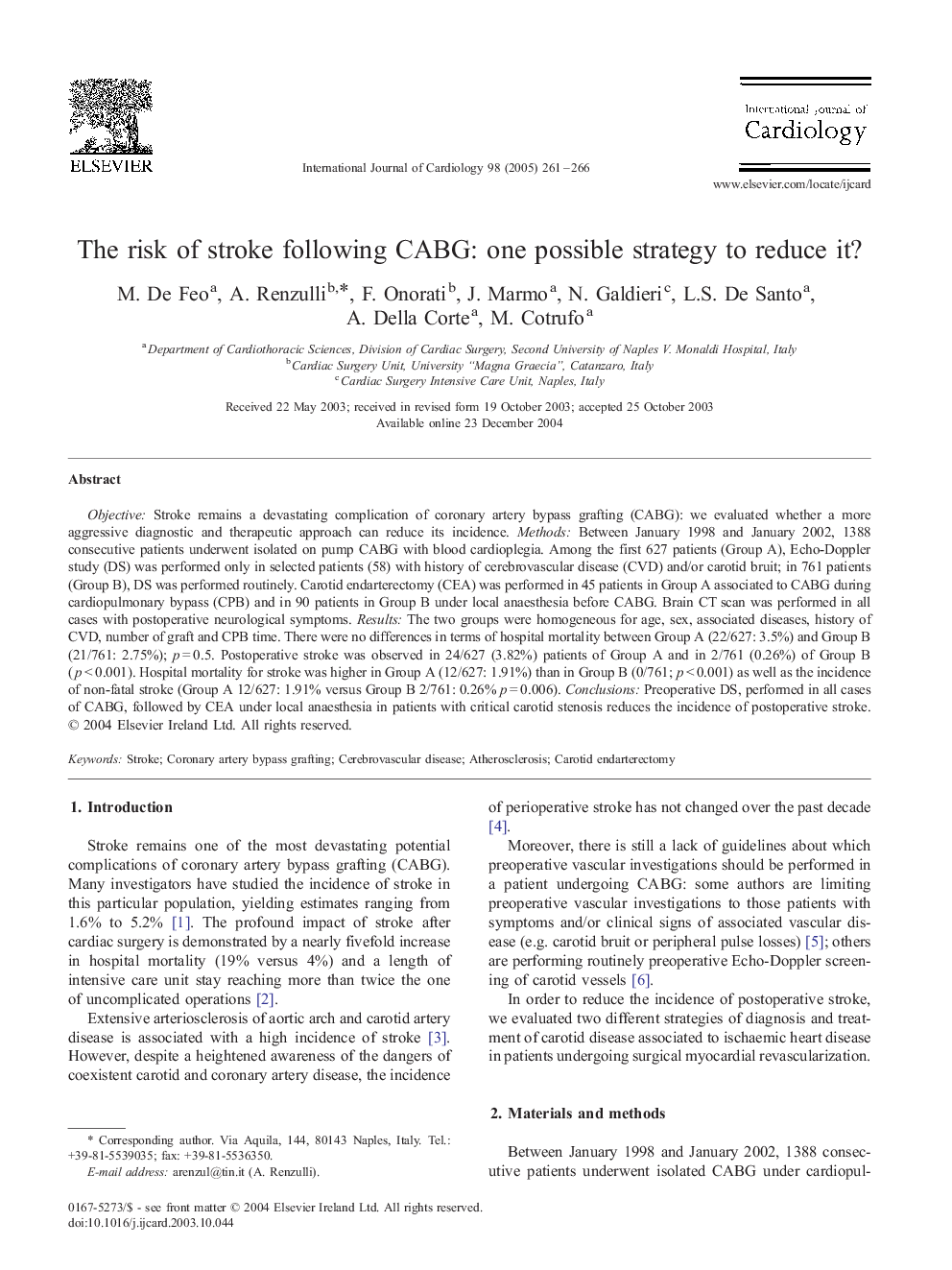| Article ID | Journal | Published Year | Pages | File Type |
|---|---|---|---|---|
| 9957124 | International Journal of Cardiology | 2005 | 6 Pages |
Abstract
Objective: Stroke remains a devastating complication of coronary artery bypass grafting (CABG): we evaluated whether a more aggressive diagnostic and therapeutic approach can reduce its incidence. Methods: Between January 1998 and January 2002, 1388 consecutive patients underwent isolated on pump CABG with blood cardioplegia. Among the first 627 patients (Group A), Echo-Doppler study (DS) was performed only in selected patients (58) with history of cerebrovascular disease (CVD) and/or carotid bruit; in 761 patients (Group B), DS was performed routinely. Carotid endarterectomy (CEA) was performed in 45 patients in Group A associated to CABG during cardiopulmonary bypass (CPB) and in 90 patients in Group B under local anaesthesia before CABG. Brain CT scan was performed in all cases with postoperative neurological symptoms. Results: The two groups were homogeneous for age, sex, associated diseases, history of CVD, number of graft and CPB time. There were no differences in terms of hospital mortality between Group A (22/627: 3.5%) and Group B (21/761: 2.75%); p=0.5. Postoperative stroke was observed in 24/627 (3.82%) patients of Group A and in 2/761 (0.26%) of Group B (p<0.001). Hospital mortality for stroke was higher in Group A (12/627: 1.91%) than in Group B (0/761; p<0.001) as well as the incidence of non-fatal stroke (Group A 12/627: 1.91% versus Group B 2/761: 0.26% p=0.006). Conclusions: Preoperative DS, performed in all cases of CABG, followed by CEA under local anaesthesia in patients with critical carotid stenosis reduces the incidence of postoperative stroke.
Keywords
Related Topics
Health Sciences
Medicine and Dentistry
Cardiology and Cardiovascular Medicine
Authors
M. De Feo, A. Renzulli, F. Onorati, J. Marmo, N. Galdieri, L.S. De Santo, A. Della Corte, M. Cotrufo,
